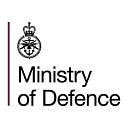Behind the scenes with the Armed Forces at Wimbledon
Mechanical Transport Warrant Officer Haughton, of the Royal Logistics Corps, is one of more than 400 service personnel who are volunteering to help The Championships run smoothly. He tells us about a decades-old tradition of military stewards.
On Saturday just gone, or the ‘Middle Saturday’ as it is known in Wimbledon parlance, the crowd rose to their feet on Centre Court to pay tribute to members of the Royal Navy, British Army and Royal Air Force who line the gangways and steward the crowds. It’s always a moving moment and a reminder of the appreciation the British public feel for their Armed Forces.
While spectators are accustomed to seeing us across the Wimbledon Estate, as we check tickets, direct people to their seats and ensure the general welfare of the crowd, many are unaware how we came to be a permanent fixture at the world’s oldest tennis tournament.
Armed Forces personnel have been a familiar presence at The Championships since 1946, when they helped the All England Lawn Tennis Club (AELTC) to safely resume the tournament after a long hiatus during WWII. Damage to Centre Court sustained after a direct hit by a German bomb had not been repaired by the time of the tournament, so the AELTC were offered the services of Armed Forces personnel to ensure the competition ran smoothly.
I’m not unused to working on former WWII bomb sites; it comes with the territory when you’re part of an Explosive Ordnance Disposal and Search Regiment.
It’s our job to safely dispose of unexploded bombs left behind by the two World Wars, as well as the modern ammunition or artillery that hasn’t fired properly during training exercises. As a Mechanical Transport Warrant Officer, it’s up to me to ensure that our fleet of blue light vehicles are ready to respond to tasks across the UK, at any time.
Voluntary roles at Wimbledon are highly sought-after by service personnel, who take time out of their allocated leave to support the event. This year alone, the coordinating officer received 1,000 applications for just 465 roles, which they screen carefully to ensure a good mix of regulars and reservists, men and women, and personnel from across the three services. I feel fortunate to be here for the third time.
The large military presence at Wimbledon is unique for a British sporting event, and I’m conscious that as soon as I put on my uniform, I become an ambassador for my unit, the Army and the United Kingdom’s Armed Forces.
During peacetime, it’s important the public still have opportunities to learn about the vital role we play at home, whether that’s protecting them from unexploded ordnance or responding to major events like terrorist incidents. It’s a pleasure and a privilege to have curious members of the public ask me what I do.
While we’re not here in a security capacity, I think our presence also makes people feel safe. They know many of us have seen combat and can feel confident that if something does happen, we’ll be able to point them in the right direction and keep a calm head.
I’m proud to continue a long tradition of service men and women at Wimbledon and am reminded every day of my predecessors’ contribution by the plaque that commemorates their service on Centre Court. Long may the tradition continue.
